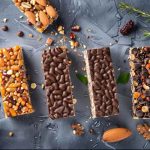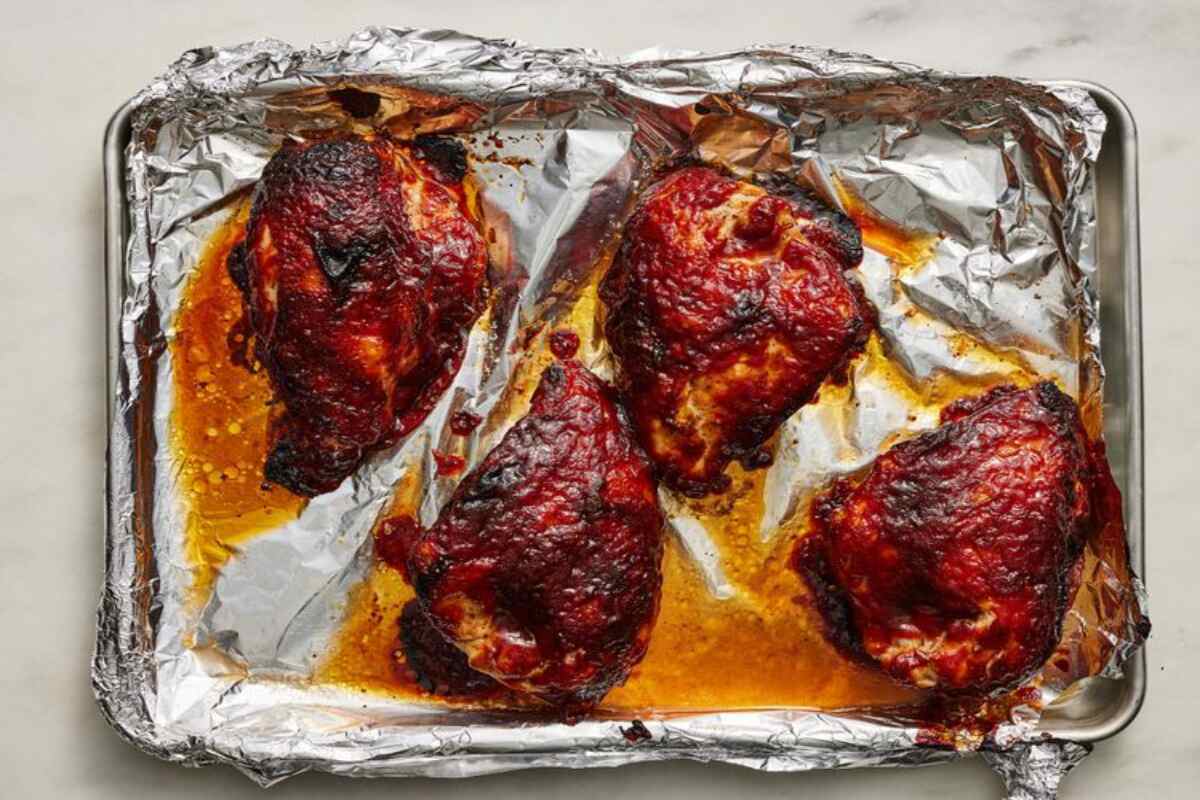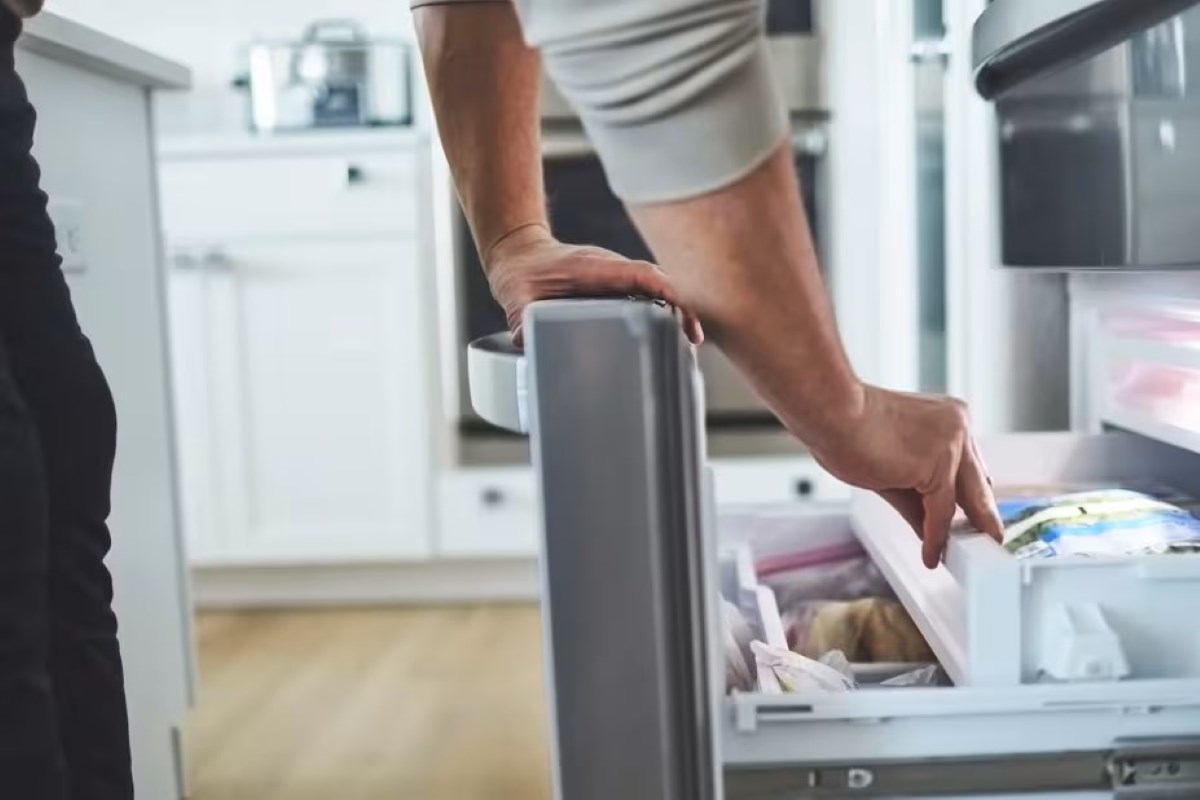Have you ever given thought to aluminium foil oven safety on the few occasions you’ve had to cook with it? From roasting to wrapping and tray lining, aluminum foil has a plethora of functions in the kitchen. However, many people still struggle to answer the question: “Is aluminum foil harmful?”
It’s going to be no-holds-barred as this piece will explain the recommendations of food-safety experts on the matter. Similarly, you’ll get to understand the science and rationale behind aluminum foil health recommendations.
To avoid keeping you hanging, aluminum foil is safe to use for cooking under certain circumstances. Read on to discover the exceptions and foil oven-safe alternatives to adopt when the glistering wrapper is rejected.
The Basic Science: What “Leaching” Means
Aluminum foils are ultra-thin strips of aluminium that are lightweight and flexible, and fairly stable when exposed to cooking heat. Aluminum foil is often used to wrap sensitive food during activities like grilling, baking, However, under some extreme conditions, aluminum foil oven safety may be compromised, resulting in leaching. Some of the factors that influence the extent of aluminum leaching are highlighted below:
Foil condition
Certain conditions can trigger galvanic corrosion of aluminum foil, and by extension, cause it to leach into food. Galvanic corrosion is an electrochemical reaction that occurs when two dissimilar metals are in contact. However, other conditions are also responsible for triggering the phenomenon. For instance, if you use aluminium foil in a steel cookware that contains salty or electrolytic food, galvanic corrosion may set in.
Physical defects like foil scratches, tears and dents may also increase the likelihood of aluminum leaching.
Food composition
Foods that contain a high concentration of organic acids should not be processed with aluminum foil. Interacting with acidic foods can cause corrosion of aluminum foil and its ingress into foods. Examples of foods that can be quite acidic are vinegar-based sauces, citrus fruits, tomatoes, and marinated meat.
As far as aluminum foil is concerned, what is true of acidic foods equally applies to salty ones. So, avoid processing brined or pickled foods with aluminum foil, especially at high temperatures.
According to a 2006 study by a food safety researcher, meat fat was also implicated in the leaching of aluminum while cooking with the metallic foil. So, avoid processing meat with aluminum foil if you have reason to believe it contains a lot of fat.
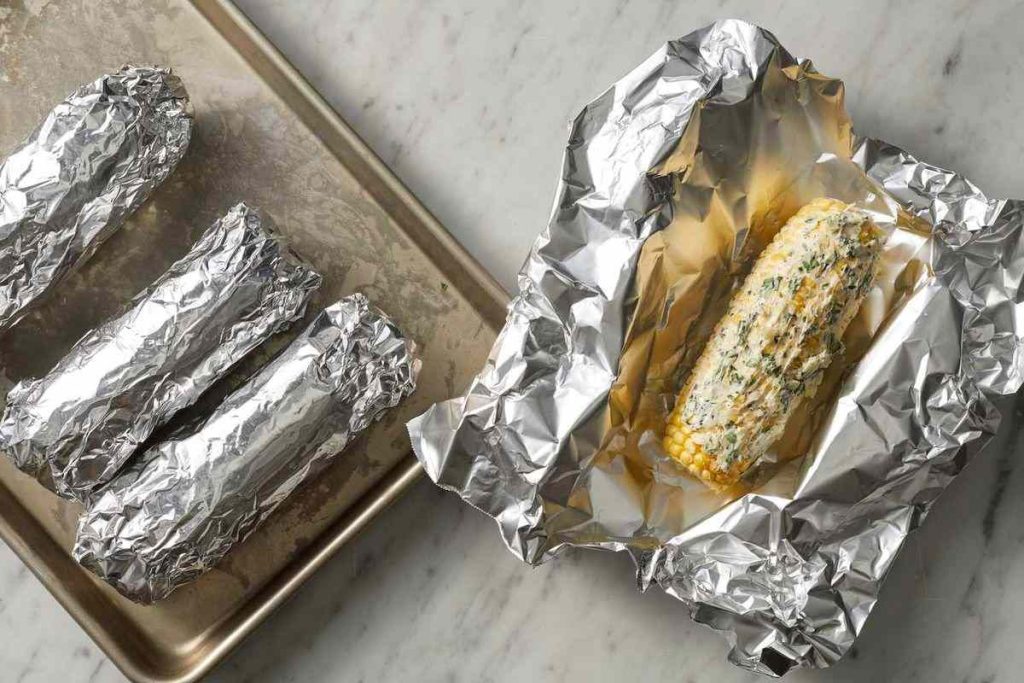
Contact time
The longer food remains in contact with aluminum foil, under extreme processing conditions, the higher the potential of leaching. The extreme conditions may be high acidity, heat, or salt.
Temperature
Generally, aluminum foil is considered safe for the average cooking process. According to Sadettin Turhan, a Turkish food engineer who specializes in meat science, cooking temperature greatly influences aluminum leaching. His research work concluded that aluminium foil oven safety becomes compromised at 482 °F (250 °C). The same study suggests that cooking below 302 °F (150 °C) reduces aluminum leaching significantly.
It would interest you to know that the leaching of aluminum foil does not automatically translate into poisoning. However, a joint FAO/WHO expert committee pegs the daily permissible intake of leached aluminum to 30mg Al/kg body weight per day. Let’s break that down. For instance, if your current weight is 40 kilos and you ingest less than 1200 mg of leached aluminum daily, you’re within the safe limits.
ALSO READ: How Long Can Leftovers Last in the Fridge Before They Go Bad?
What the Evidence and Expert Bodies Say
From the previously painted scenarios, it would be safe to conclude that cooking with foil health risk is minimal for normal home use. Food safety authorities like the Food and Agriculture Organization (FAO), World Health Organization (WHO), and independent researchers agree on that conclusion.

However, the few exceptions when toxicology literature places aluminum foil health on red alert are instances of long-term exposure under extreme conditions. For the sake of clarity, the next section will discuss some of the said ‘extreme conditions.’
When To Be Cautious (Practical Red Flags)
Aluminum foil oven safety becomes a serious concern under the following circumstances:
- When aluminum foil is exposed to very salty or highly acidic foods for extended periods.
- Storing acidic foods, even mildly acidic ones, in foil for several days.
- Using torn, scratched or recycled foil for cooking, it is safe to always use food-grade foil.
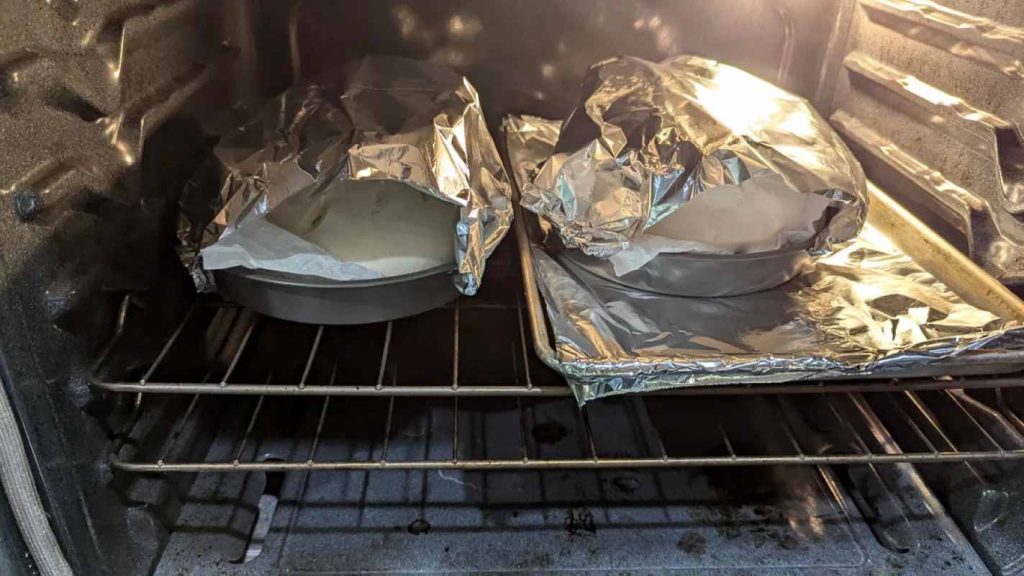
There are also some cautions and safety tips specific to the use of aluminum foil in ovens.
1. Don’t line the bottom of an oven
Heat-regulated ovens often come with heat vents that permit seamless and controlled heat flow. Except the oven manufacturer explicitly permits it, never line ovens with aluminum foil, as doing this may block the vents and damage heating elements.
2. Avoid using foil in microwave ovens
Safe cooking with foil is not even a discussion for microwave ovens. Most manufacturers often state clearly in user manuals to avoid the use of aluminum foil in their products. Wrapping food in foil makes microwaving inefficient. It could also reflect back the microwaves and cause sparks, fires and damage to the appliance.
3. Use alternatives for high-heat broiling
Food broiling is usually done at high temperatures (c. 482 °F), so aluminum leaching food becomes a risk. Instead, aluminum foil oven safety advocates use alternative materials for broiling.
Practical Alternatives & Best Uses
Whenever aluminum foil oven safety is in doubt, always go for alternative materials like parchment paper. Parchment paper is basically cellulose fibers, from wood or cotton, that have been made grease- and heat-resistant by coating them with food-grade silicone.
Depending on specific brands, parchment paper will remain stable at temperatures of up to 425 °F (220 °C). Confirm with the temperature limits with manufacturer before using parchment paper for high-heat purposes.

Other alternatives to aluminum foil during cooking are ceramic, stainless steel, and oven-safe glass. While many of these cookwares do not offer the same flexibility as foil, they are heat-stable, and eliminate the risk of aluminum leaching.
ALSO READ: Sustainable Halloween Treats: How to Enjoy the Spookiest Night Without Scaring the Planet
Close Up
During camping vacations, Summer BBQ tips may include using aluminium foil for a quick roast. Using aluminum foil occasionally, and at the generic cooking temperatures, is largely safe. As discussed in the article, you are, however, to be mindful of aluminum foil oven safety when extreme conditions are involved. Also, when in doubt, use alternative materials to hold or wrap food during cooking.
Use foil smartly — it’s a handy kitchen tool, not a health hazard when handled correctly.





